- Home
- Clive Cussler
Dragon dp-10 Page 2
Dragon dp-10 Read online
Page 2
Dennings looked at the fuel gauges. He suddenly felt cheerful. Barring a hundred-knot headwind, they should make it with four hundred gallons to spare.
Not everyone was wallowing in good cheer. Seated at his engineer’s panel, Mosely studied the temperature gauge of engine number four. He didn’t like what he read. He routinely tapped the dial with his finger.
The needle twitched and wavered into the red.
He crawled aft through the tunnel and stared through a port at the underside of the engine. The nacelle was streaked with oil and smoke was trailing from the exhaust. Mosely returned to the cockpit and knelt in the narrow aisle between Dennings and Stromp.
“Bad news, Major. We’re going to have to shut down number four.”
“You can’t prod her along for a few more hours?” asked Dennings.
“No, sir, she can swallow a valve and catch fire at any minute.”
Stromp looked over at Dennings, his face somber. “I vote we shut four down for a while and let it cool off.”
Dennings knew Stromp was right. They would have to maintain their present altitude and nurse the other three engines to keep them from overheating. Then restart number four during the ascent to 32,000 feet and the bombing run.
He hailed Arnold, who was bent over his navigator’s board tracing the flight path. “How long before Japan?”
Arnold noted the slight drop in speed and made a swift calculation. “One hour and twenty-one minutes to the mainland.”
He nodded. “Okay, we’ll shut number four until we need it.”
Even as he spoke, Stromp closed the throttle, flicked off the ignition switch, and feathered the propeller. Next he engaged the automatic pilot.
For the next half hour everyone kept a wary eye on number four engine while Mosely called out the temperature drop.
“We have a landfall,” announced Arnold. “A small island coming up about twenty miles dead ahead.”
Stromp peered at it through binoculars. “Looks like a hot dog sticking out of the water.”
“Sheer rock walls,” observed Arnold. “No sign of a beach anywhere.”
“What’s it called?” asked Dennings.
“Doesn’t even show on the map.”
“Any sign of life? The Nips could be using it as an offshore warning station.”
“Looks barren and deserted,” answered Stromp.
Dennings felt safe for the moment. No enemy ships had been sighted, and they were too far from shore to be intercepted by Japanese fighters. He settled down in his seat and stared unseeing at the sea.
The men relaxed and passed around coffee and salami sandwiches, immune to the droning engines and the tiny speck that appeared ten miles away and 7,000 feet above their port wingtip.
Unknown to the crew of Dennings’ Demons, they had only a few minutes to live.
Lieutenant Junior Grade Sato Okinaga saw the brief glint from the reflected sun below him. He banked and went into a shallow dive for a closer inspection. It was an aircraft. No question. A plane from another patrol, most likely. He reached for the switch to his radio, but hesitated. In a few seconds he’d be able to make a positive identification.
A young and inexperienced pilot, Okinaga was one of the lucky ones. Out of his recently graduated class of twenty-two, who were rushed through training during Japan’s desperate days, he and three others were ordered to perform coastal patrols. The rest went into kamikaze squadrons.
Okinaga was deeply disappointed. He would have gladly given his life for the Emperor, but he accepted boring patrol duty as a temporary assignment, hoping to be called for a more glorious mission when the Americans invaded his homeland.
As the lone aircraft grew larger, Okinaga didn’t believe what he saw. He rubbed his eyes and squinted. Soon he could clearly make out the ninety-foot polished aluminum fuselage, the huge 141-foot wings, and the three-story vertical stabilizer of an American B-29.
He stared dumfounded. The bomber was flying out of the northeast from an empty sea, 20,000 feet below its combat ceiling. Unanswerable questions flooded his mind. Where had it come from? Why was it flying toward central Japan with one engine feathered? What was its mission?
Like a shark knifing toward a bleeding whale, Okinaga closed to within a mile. Still no evasive action. The crew seemed asleep or bent on suicide.
Okinaga had no more time for guessing games. The great winged bomber was looming up before him. He jammed the throttle of his Mitsubishi A6M Zero against its stop and made a circling dive. The Zero handled like a swallow, the 1,130-horsepower Sakae engine hurtling him behind and beneath the sleek, gleaming B-29.
Too late the tail gunner sighted the fighter and belatedly opened fire. Okinaga squeezed the gun tit on his control stick. His Zero shuddered as his two machine guns and two twenty-millimeter cannons shredded metal and human flesh.
A light touch of the rudder and his tracers ate their way into the wing and the B-29’s number-three engine. The cowling ripped and tore away, oil poured through holes, followed by flames. The bomber seemed to hover momentarily, and then it flipped on its side and spun toward the sea.
Only after the choked-off cry of the tail gunner and his short burst of fire did the Demons realize they were under attack. They had no way of knowing from what direction the enemy fighter had come. They barely had time to recover when the shells from the Zero ate into the starboard wing.
A strangled cry came from Stromp. “We’re going in!”
Dennings shouted into the intercom as he fought to level the plane. “Stanton, jettison the bomb! Jettison the goddamn bomb!”
The bombardier, wedged against his bombsight by the centrifugal force, yelled back. “It won’t fall free unless you straighten us out.”
The number-three engine was blazing now. The sudden loss of two engines, both on the same side, had thrown the plane over until it was standing on one wing. Working in unison, Dennings and Stromp struggled with the controls, fighting the dying aircraft to an even keel. Dennings pulled back on the throttles, leveling out but sending the bomber into a flat, sickening stall.
Stanton pulled himself to an upright position and popped open the bomb-bay doors. “Hold it steady,” he yelled futilely. He wasted no time adjusting the bombsight. He pushed the bomb release button.
Nothing happened. The violent twisting motion had jammed the atomic bomb against its tight quarters.
White-faced, Stanton struck the release with his fist, but the bomb stubbornly remained in place. “It’s jammed!” he cried. “It won’t fall free.”
Fighting for a few more moments of life, knowing that if they survived they must all take their own lives by cyanide, Dennings struggled to ditch the mortally wounded aircraft in the sea.
He almost made it. He came within two hundred feet of settling the Demons on her belly in a calm sea. But the magnesium in the accessories and crankcase on number-three engine flared like an incendiary bomb, burning through its mounts and wing spar. It dropped away, ripping away the wing control cables.
Lieutenant Okinaga slipped the Zero off one wing, spiraling around the stricken B-29. He watched the black smoke and orange flame curl from the blue sky like a brush stroke. He watched the American plane crush itself into the sea, followed by the geyser of white water.
He circled, searching for survivors, but saw only a few bits of floating debris. Elated at what was to be his first and only kill, Okinaga banked around the funeral pyre of smoke one last time before heading back to Japan and his airfield.
As Dennings’ shattered aircraft and its dead crew settled into the seabed a thousand feet beneath the surface, another B-29 in a later time zone and six hundred miles to the southeast set up for its bomb run. With Colonel Paul Tibbets at the controls, the Enola Gay had arrived over the Japanese city of Hiroshima.
Neither flight commander was aware of the other. Each man thought only his aircraft and crew was carrying the first atomic bomb to be dropped in war.
Dennings’ Demons had failed to
make its rendezvous with destiny. The stillness of the deep seabed was as silent as the cloud that settled over the event. The heroic attempt by Dennings and his crew was buried in bureaucratic secrecy and forgotten.
Part 1
Big John
1
October 3, 1993
Western Pacific Ocean
THE WORST OF the typhoon had passed. The mad thrashing seas had subsided, but the waves still climbed the bows and came green and leaden over the decks, leaving a welter of foam behind. The thick black clouds broke apart and the wind died to a gusty thirty knots. To the southwest, shafts of sunlight broke through, painting blue circles on the tumbling swells.
Braving the winds and spray, Captain Arne Korvold stood on the open bridge of the Norwegian Rindal Lines passenger-cargo liner Narvik and aimed his binoculars at a huge ship wallowing dead in the whitecaps. She was big, a Japanese auto carrier by the look of her. Her upper works stretched from blunt bow to a perfectly squared stern, like a rectangular box laid horizontal. Except for the bridge and the crew’s quarters on the upper deck, there were no ports or windows on her sides.
She seemed to have a ten-degree permanent list but rolled to twenty as the swells smashed into her exposed port broadside. The only sign of life was a wisp of smoke from her stack. Korvold grimly noted that her lifeboats had been launched, and a sweep of the restless sea failed to find any sign of them. He refocused the binoculars and read the English name spelled out beneath the Japanese characters on the bow.
She was called the Divine Star.
Korvold returned to the comfort of the central bridge and leaned into the communications room. “Still no response?”
The radio operator shook his head. “Nothing. Not a peep wince we sighted her. Her radio must be closed down. Impossible to believe they abandoned ship without a distress call.”
Korvold stared silently through the bridge windows at the Japanese ship drifting less than a kilometer off his starboard rail. Norwegian by birth, he was a short, distinguished man who never made a hurried gesture. His ice-blue eyes seldom blinked, and his lips beneath the trimmed beard seemed constantly frozen in a slight smile. Twenty-six years at sea, mostly in cruise ships, he had a warm and friendly disposition, respected by his crew and admired by the passengers.
He tugged at his short graying beard and swore quietly to himself. The tropical storm had unexpectedly swung north onto his course and put him nearly two days behind schedule on his passage from the port of Pusan, Korea, to San Francisco. Korvol had not left the bridge for forty-eight hours and he was exhausted. Just as he was about to take a welcome rest, they sighted the seemingly derelict Divine Star.
Now he found himself faced with an enigma and a time-consuming search for the Japanese car carrier’s boats. He was also burdened with the responsibility of 130 passengers, most seasick to the gills, who were in no mood for a benevolent rescue operation.
“Permission to take a boarding crew across, Captain?”
Korvold looked up into the sculpted Nordic face of Chief Officer Oscar Steep. The eyes that stared back were a darker blue than Korvold’s. The chief officer stood lean and as straight as a light pole, skin tanned and hair bleached blond from exposure to the sun.
Korvold didn’t immediately answer but walked over to a bridge window and gazed down at the sea separating the two ships. From wave crest to trough the waves were running three to meters. “I’m not of a mind to risk lives, Mr. Steep. Better wait until seas calm a bit.”
“I’ve taken a boat through worse.”
“No hurry. She’s a dead ship, dead as a body in the morgue. And from the look of her, her cargo has shifted and she’s taking on water. Better we leave her be and search for her boats.”
“There may be injured men over there,” Steen persisted.
Korvold shook his head. “No captain would have abandoned ship and left injured crewmen behind.”
“No captain in his right senses maybe. But what kind of a man would desert a sound ship and lower boats in the midst of a sixty-five knot gale typhoon without sending a Mayday signal?”
“A mystery all right,” Korvold agreed.
“And there’s her cargo to consider,” Steen continued. “Her waterline indicates a full load. She looks capable of transporting over seven thousand automobiles.”
Korvold gave Steen a shrewd look. “You thinking salvage, Mr. Steen?”
“Yes, sir, I am. If she’s totally abandoned with a full cargo, and we can sail her into port, our salvage claim should be equal to half her value or better. The company as well as the crew could share in five or six hundred million kroner.”
Korvold considered for a few moments, a tantalizing thought of greed wrestling with a deep feeling of foreboding. Greed won out. “Pick your boarding crew, and include the assistant engineer. If there’s smoke from her funnel, her machinery must still be in working order.” He paused. “But I still prefer you wait for the water to settle.”
“No time,” Steen announced flatly. “If her list increases another ten degrees, we may be too late. I’d better go quickly.”
Captain Korvold sighed. He was going against his better judgment, but it also occurred to him that once the Divine Star‘s situation was known, every salvage tug within a thousand miles would come full speed toward their position like tow-truck operators flocking to a highway accident.
Finally he shrugged. “When you’re assured none of the Divine Star‘s crew is on board, and you can get her under way, report back and I’ll begin a search for her boats.”
Steen was gone almost before Korvold finished speaking. He assembled his men and was lowered down into the swirling water within ten minutes. The boarding party consisted of himself and four seamen—the assistant chief engineer, Olaf Andersson, and the communications man, David Sakagawa, the only crewman on board the Narvik who could speak Japanese. The seamen were to probe the vessel while Andersson examined the engine room. Stem was to take formal possession of the auto carrier if it was found abandoned.
With Steen at the helm, the double-ender launch plowed through the heavy seas, struggling over the crests of the waves that threatened to swamp her before plunging down into the troughs. The big Volvo marine engine growled without a miss as they bore down on the auto carrier with the wind and sea astern of them.
A hundred meters from the Divine Star they discovered they weren’t alone. A school of sharks circled the listing ship as though some inner sense told them it was going to sink and maybe leave behind some tasty scraps.
The seaman at the wheel slipped the boat under the stubby bow on the lee side. It seemed to them the Divine Star was going to roll over on them with each wave that broke against her hull. When the great ship rolled down, Steen heaved up a light nylon boarding ladder with an aluminum grappling hook on one end. On the third try the hook caught on the top edge of the bulwark and gripped.
Stem scrambled up the rope ladder first and over the side. He was quickly followed by Andersson and the rest. After assembling beside the huge anchor winches, Steen led them up a fire escape-like stairway that was attached to the windowless forward bulkhead. After climbing five decks, they entered the largest bridge area Steen had ever seen during his fifteen years at sea. After the small, efficient wheelhouse on the Narvik, this one looked as vast as a gymnasium, and yet the impressive array of electronic equipment filled only a small section in the middle.
It was empty of life but littered with charts, sextants, and other navigation equipment that spilled from open cabinets. Two briefcases lay open on a counter as if their owners had just left the room for a short time. The exodus appeared to be bathed in panic.
Stem studied the main console. “She’s fully automated,” he said to Andersson.
The chief engineer nodded. “And then some. The controls are voice operated. No pushing levers or giving helmsmen course instructions here.”
Steen turned to Sakagawa. “Can you turn this thing on and talk to it?”
The N
orwegian-born Asian leaned over the computerized console and silently studied it for several seconds. Then he pushed a pair of buttons in quick succession. The console’s lights blinked on and the unit began to hum. Sakagawa looked at Steen with a slight smile. “My Japanese is rusty, but I think I can communicate with it.”
“Ask it to report the ship’s status.”
Sakagawa rattled off Japanese into a small receiver and waited expectantly. After a few moments a male voice answered in slow, distinctive tones. When it stopped, Sakagawa stared at Steen blankly.
“It says the sea cocks are open and the flood level in the engine room is approaching two meters.”
“Order it to close them!” snapped Steen.
After a short exchange, Sakagawa shook his head. “The computer says the sea cocks are jammed open. They can’t be shut off by electronic command.”
“Looks like I’ve got my work cut out,” said Andersson. “I’d better get down there and get them turned off. And tell that damned robot to start the pumps.” While he spoke he motioned for two of the seamen to follow him, and they disappeared down a companionway on a dead run toward the engine room.
One of the remaining seamen came up to Steen, his eyes wide in shock and face as white as plaster. “Sir… I found a body. I think it’s the radioman.”
Steen hurried into the communications room. An almost shapeless corpse sat in a chair hunched over the radio transmitter panel. He might have been a human when he stepped on board the Divine Star, not now. There was no hair, and but for the fully exposed teeth where the lips had been, Steen couldn’t have told whether he was looking at the front or back. The pathetic abhorrence looked as though his skin had been blistered off and the flesh beneath burned and partially melted.
Yet there wasn’t the slightest indication of excessive heat or fire. His clothes were as clean and pressed as though he’d just put them on.

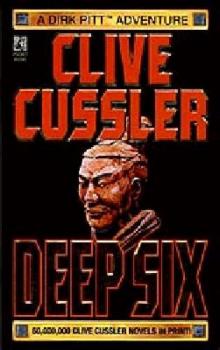 Deep Six
Deep Six Odessa Sea
Odessa Sea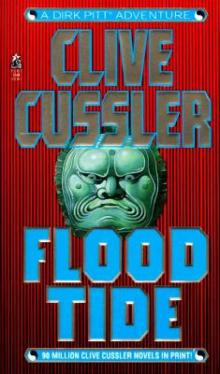 Flood Tide
Flood Tide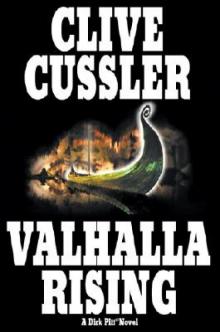 Valhalla Rising
Valhalla Rising Thriller 2
Thriller 2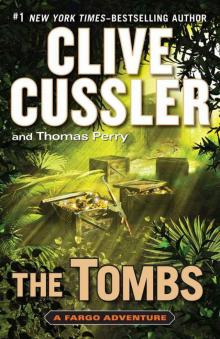 The Tombs
The Tombs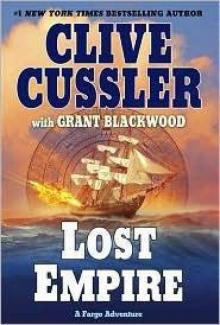 Lost Empire
Lost Empire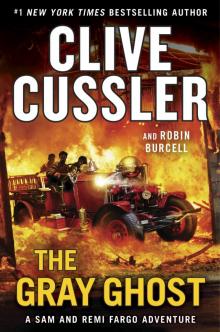 The Gray Ghost
The Gray Ghost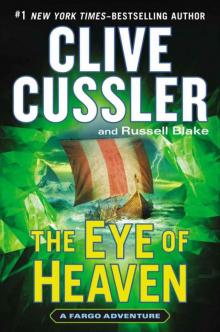 The Eye of Heaven
The Eye of Heaven Polar Shift
Polar Shift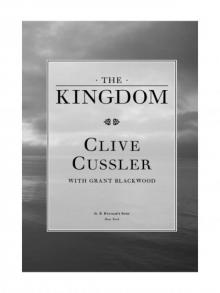 The Kingdom
The Kingdom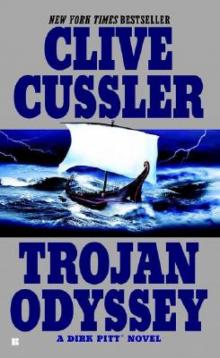 Trojan Odyssey
Trojan Odyssey Shadow Tyrants
Shadow Tyrants Nighthawk
Nighthawk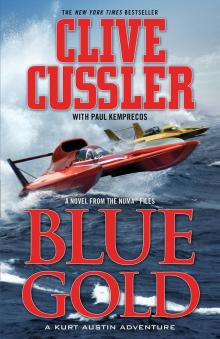 Blue Gold
Blue Gold Serpent
Serpent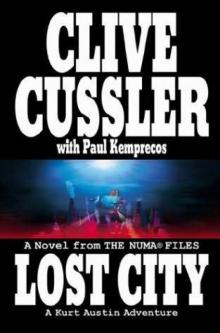 Lost City
Lost City The Gangster
The Gangster White Death
White Death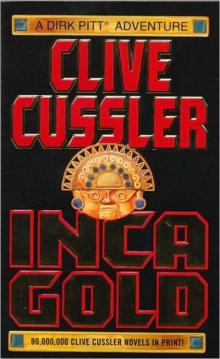 Inca Gold
Inca Gold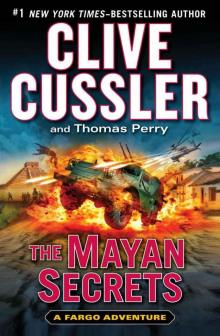 The Mayan Secrets
The Mayan Secrets The Pharaoh's Secret
The Pharaoh's Secret The Emperor's Revenge
The Emperor's Revenge Corsair
Corsair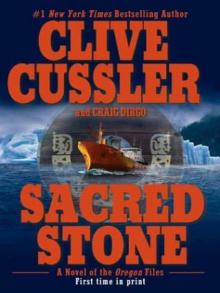 Sacred Stone
Sacred Stone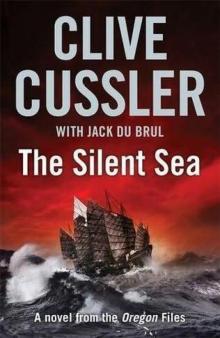 The Silent Sea
The Silent Sea The Rising Sea
The Rising Sea Black Wind
Black Wind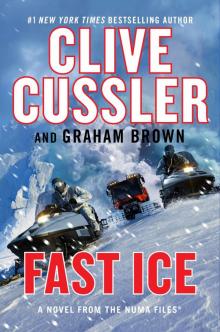 Fast Ice
Fast Ice Ghost Ship
Ghost Ship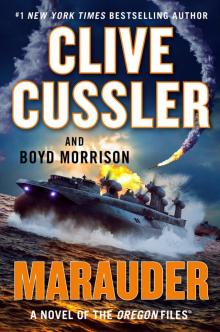 Marauder
Marauder The Thief
The Thief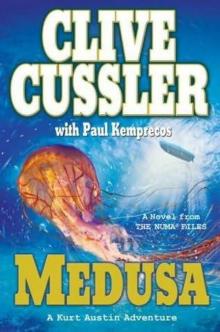 Medusa
Medusa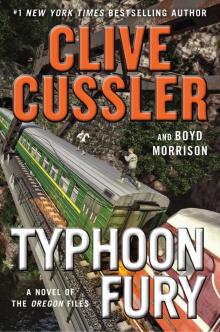 Typhoon Fury
Typhoon Fury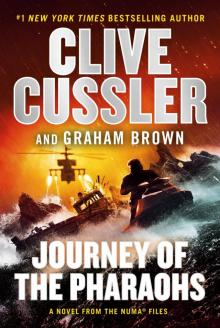 Journey of the Pharaohs
Journey of the Pharaohs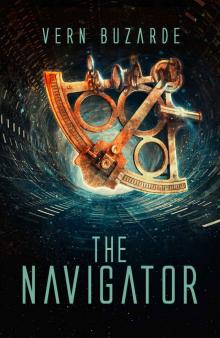 The Navigator
The Navigator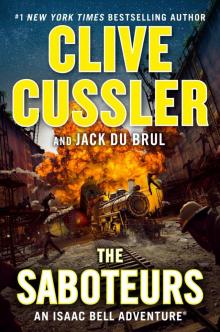 The Saboteurs
The Saboteurs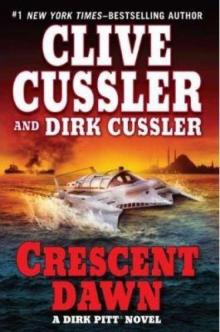 Crescent Dawn
Crescent Dawn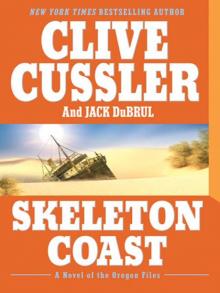 Skeleton Coast
Skeleton Coast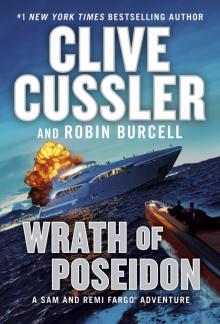 Wrath of Poseidon
Wrath of Poseidon The Mediterranean Caper
The Mediterranean Caper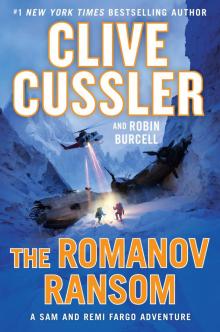 The Romanov Ransom
The Romanov Ransom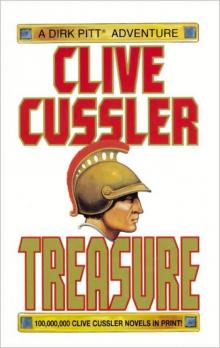 Treasure
Treasure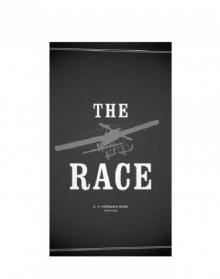 The Race
The Race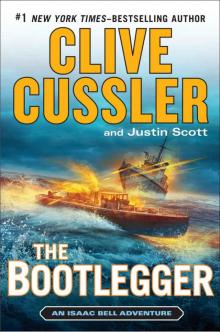 The Bootlegger
The Bootlegger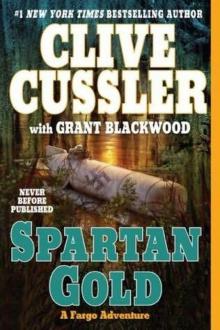 Spartan Gold
Spartan Gold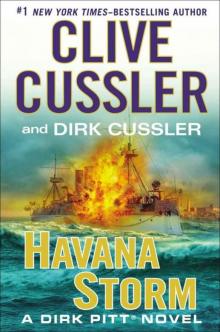 Havana Storm
Havana Storm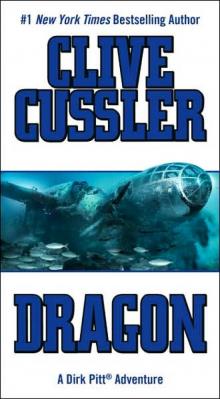 Dragon
Dragon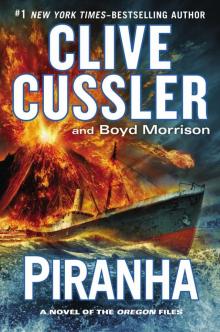 Piranha
Piranha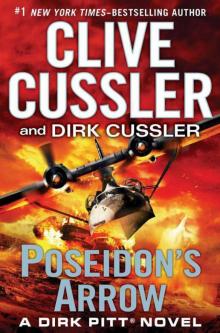 Poseidon's Arrow
Poseidon's Arrow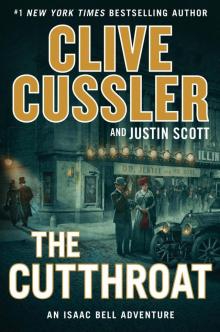 The Cutthroat
The Cutthroat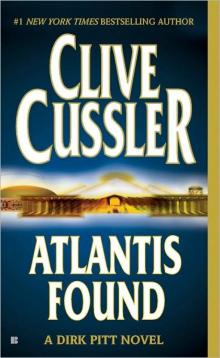 Atlantis Found
Atlantis Found The Jungle
The Jungle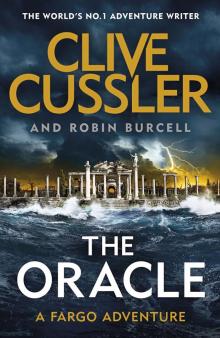 The Oracle
The Oracle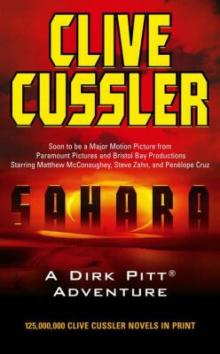 Treasure / Dragon / Sahara: Clive Cussler Gift Set
Treasure / Dragon / Sahara: Clive Cussler Gift Set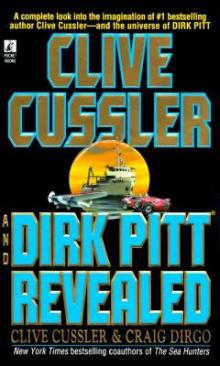 Clive Cussler and Dirk Pitt Revealed
Clive Cussler and Dirk Pitt Revealed The Sea Hunters
The Sea Hunters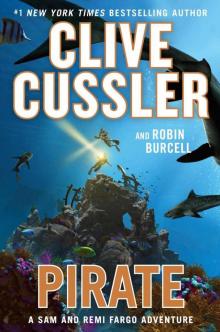 Pirate
Pirate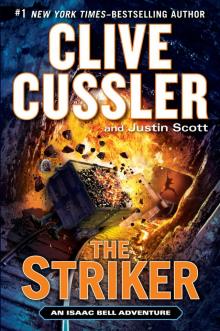 The Striker
The Striker Plague Ship
Plague Ship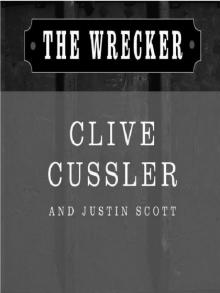 The Wrecker
The Wrecker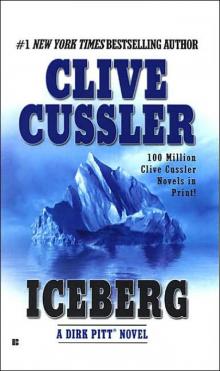 Iceberg
Iceberg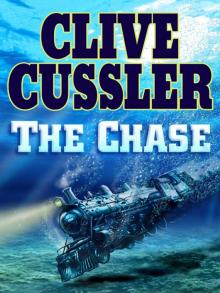 The Chase
The Chase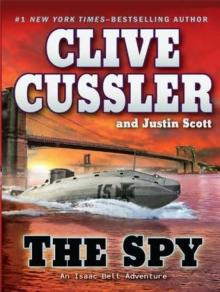 The Spy
The Spy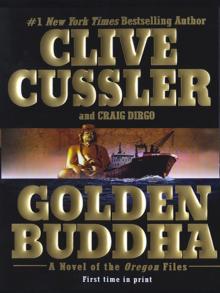 Golden Buddha
Golden Buddha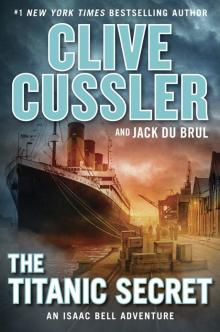 The Titanic Secret
The Titanic Secret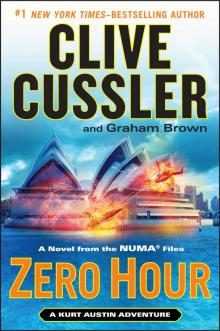 Zero Hour
Zero Hour Fire Ice
Fire Ice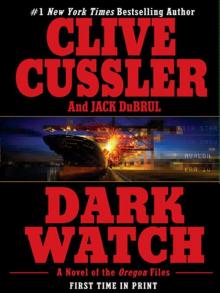 Dark Watch
Dark Watch The Storm
The Storm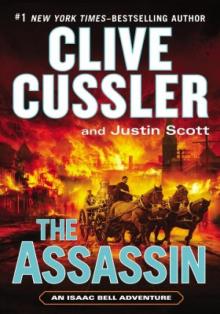 The Assassin
The Assassin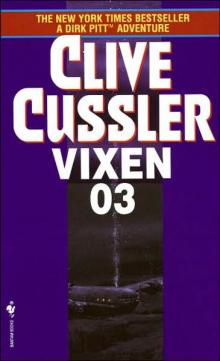 Vixen 03
Vixen 03 Arctic Drift
Arctic Drift Night Probe!
Night Probe! Cyclops
Cyclops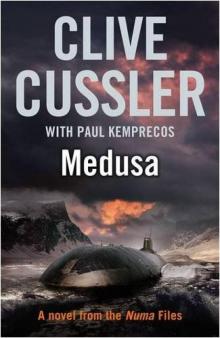 Medusa nf-8
Medusa nf-8 Shock Wave dp-13
Shock Wave dp-13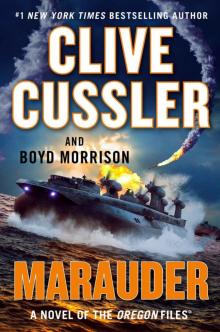 Marauder (The Oregon Files)
Marauder (The Oregon Files)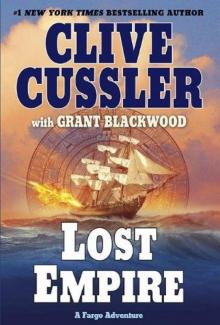 Lost Empire fa-2
Lost Empire fa-2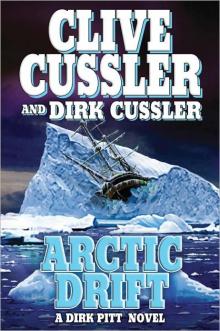 Arctic Drift dp-20
Arctic Drift dp-20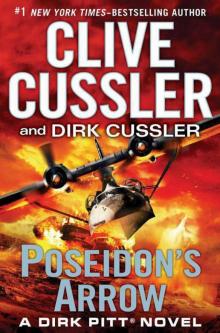 Dirk Pitt 22 - Poseidon's Arrow
Dirk Pitt 22 - Poseidon's Arrow Treasure of Khan dp-19
Treasure of Khan dp-19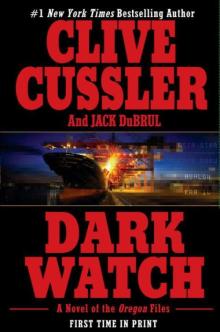 Dark Watch of-3
Dark Watch of-3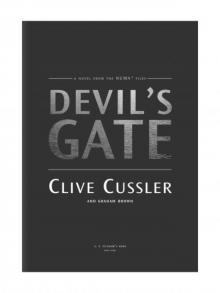 Devil's Gate
Devil's Gate The Sea Hunters II: More True Adventures with Famous Shipwrecks
The Sea Hunters II: More True Adventures with Famous Shipwrecks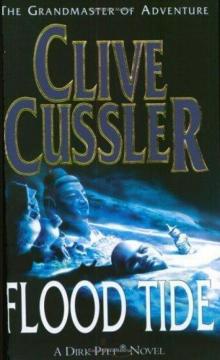 Flood Tide dp-14
Flood Tide dp-14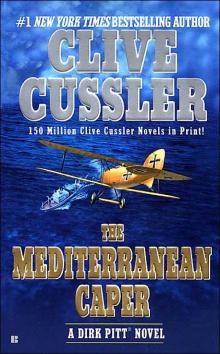 The Mediterranean Caper dp-2
The Mediterranean Caper dp-2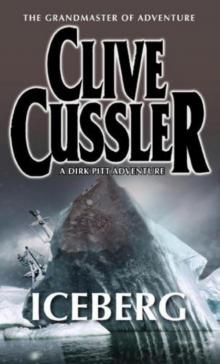 Iceberg dp-3
Iceberg dp-3 Sahara dpa-11
Sahara dpa-11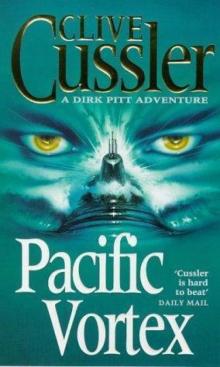 Pacific Vortex! dp-1
Pacific Vortex! dp-1 Deep Six dp-7
Deep Six dp-7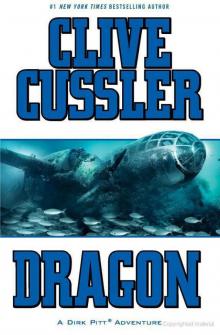 Dragon dp-10
Dragon dp-10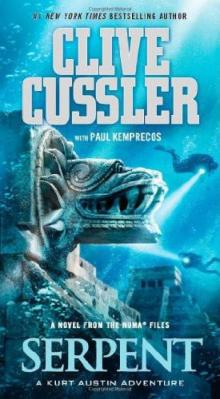 Serpent nf-1
Serpent nf-1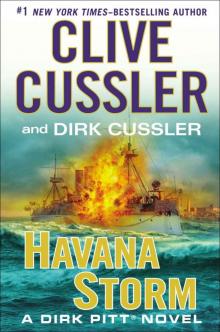 Havana Storm (Dirk Pitt Adventure)
Havana Storm (Dirk Pitt Adventure)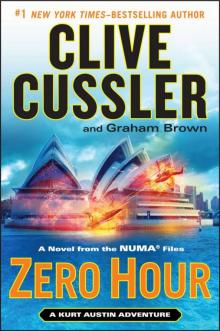 Zero Hour nf-11
Zero Hour nf-11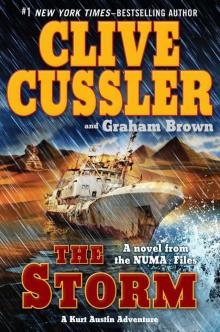 The Storm nf-10
The Storm nf-10 The Thief ib-5
The Thief ib-5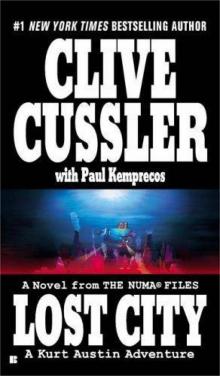 Lost City nf-5
Lost City nf-5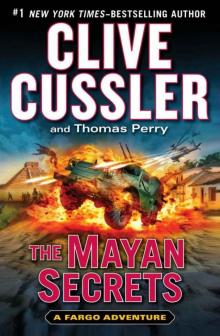 The Mayan Secrets fa-5
The Mayan Secrets fa-5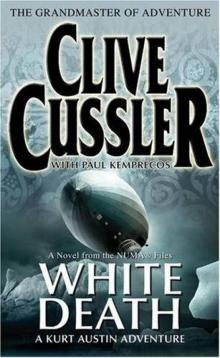 White Death nf-4
White Death nf-4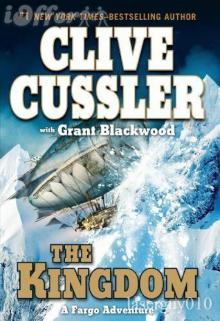 The Kingdom fa-3
The Kingdom fa-3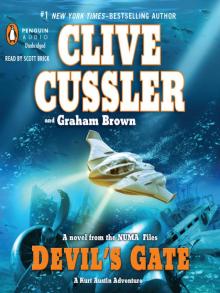 Devil's Gate nf-9
Devil's Gate nf-9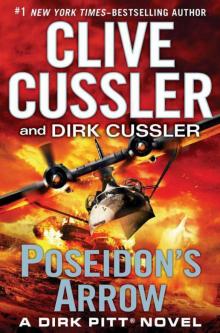 Poseidon's Arrow dp-22
Poseidon's Arrow dp-22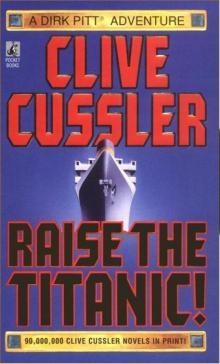 Raise the Titanic dp-4
Raise the Titanic dp-4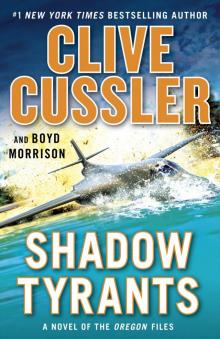 Shadow Tyrants--Clive Cussler
Shadow Tyrants--Clive Cussler Sacred Stone of-2
Sacred Stone of-2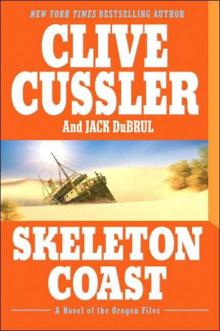 Skeleton Coast tof-4
Skeleton Coast tof-4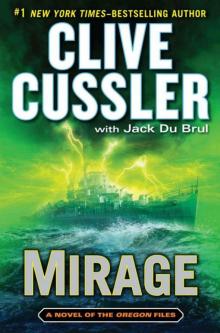 Mirage tof-9
Mirage tof-9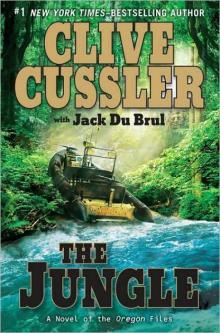 The Jungle of-8
The Jungle of-8 The Emperor's Revenge (The Oregon Files)
The Emperor's Revenge (The Oregon Files)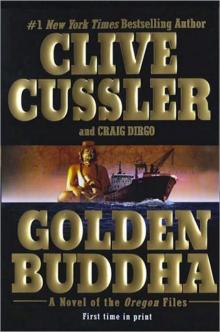 Golden Buddha of-1
Golden Buddha of-1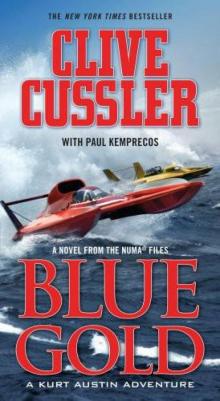 Blue & Gold
Blue & Gold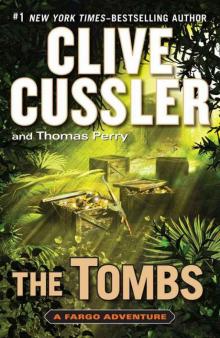 The Tombs fa-4
The Tombs fa-4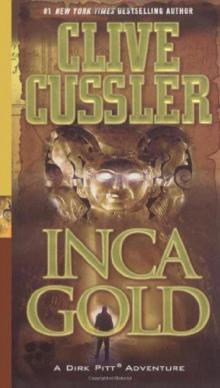 Inca Gold dp-12
Inca Gold dp-12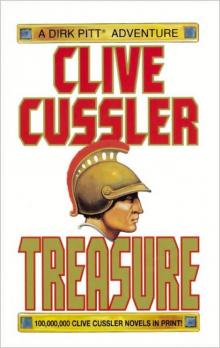 Treasure dp-9
Treasure dp-9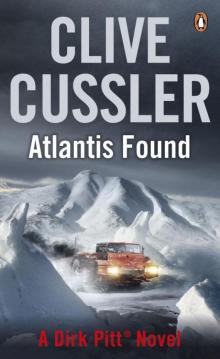 Atlantis Found dp-15
Atlantis Found dp-15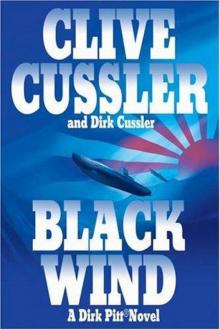 Black Wind dp-18
Black Wind dp-18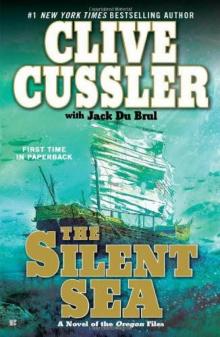 the Silent Sea (2010) tof-7
the Silent Sea (2010) tof-7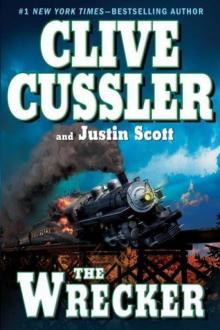 The Wrecker ib-2
The Wrecker ib-2 Fire Ice nf-3
Fire Ice nf-3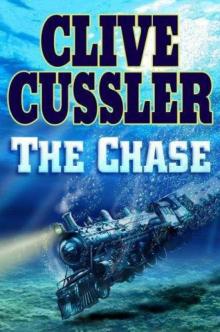 The Chase ib-1
The Chase ib-1 Sahara
Sahara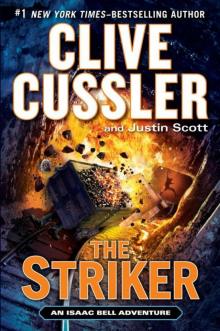 The Striker ib-6
The Striker ib-6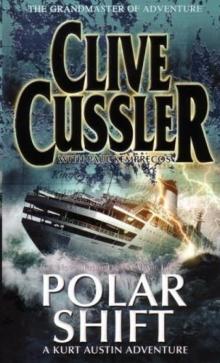 Polar Shift nf-6
Polar Shift nf-6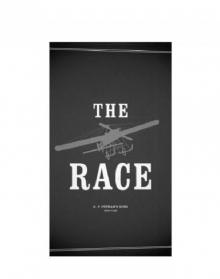 The Race ib-4
The Race ib-4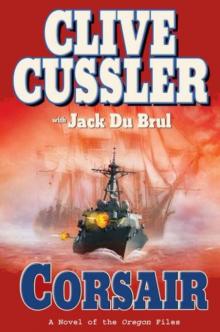 Corsair of-6
Corsair of-6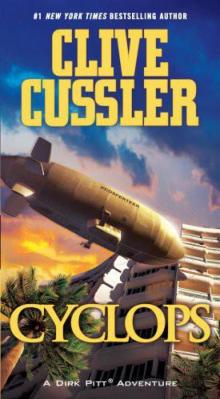 Cyclops dp-8
Cyclops dp-8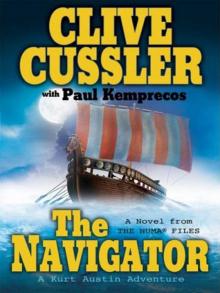 The Navigator nf-7
The Navigator nf-7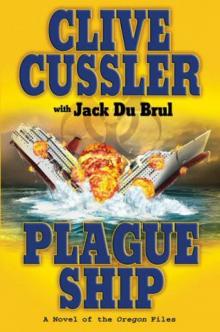 Plague Ship tof-5
Plague Ship tof-5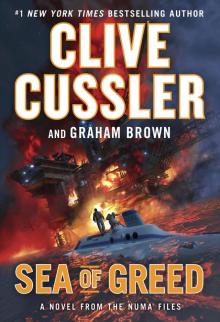 Sea of Greed
Sea of Greed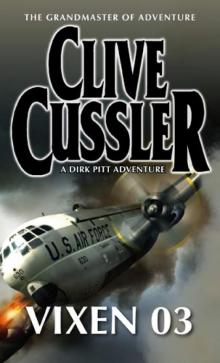 Vixen 03 dp-5
Vixen 03 dp-5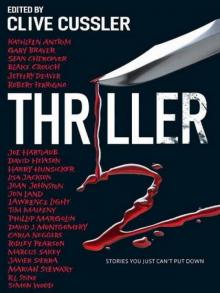 Thriller 2: Stories You Just Can't Put Down
Thriller 2: Stories You Just Can't Put Down